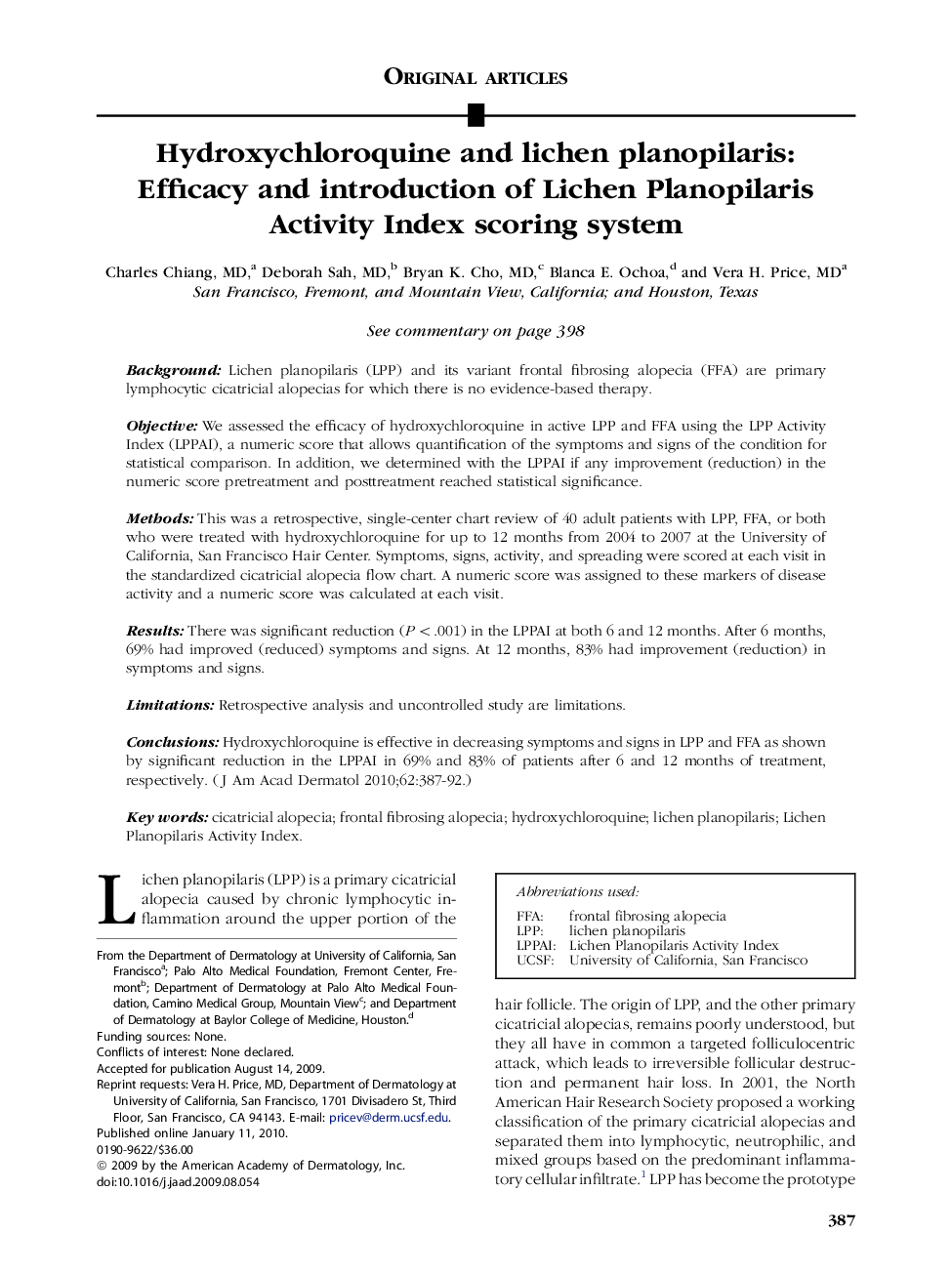| کد مقاله | کد نشریه | سال انتشار | مقاله انگلیسی | نسخه تمام متن |
|---|---|---|---|---|
| 3208784 | 1587596 | 2010 | 6 صفحه PDF | دانلود رایگان |

BackgroundLichen planopilaris (LPP) and its variant frontal fibrosing alopecia (FFA) are primary lymphocytic cicatricial alopecias for which there is no evidence-based therapy.ObjectiveWe assessed the efficacy of hydroxychloroquine in active LPP and FFA using the LPP Activity Index (LPPAI), a numeric score that allows quantification of the symptoms and signs of the condition for statistical comparison. In addition, we determined with the LPPAI if any improvement (reduction) in the numeric score pretreatment and posttreatment reached statistical significance.MethodsThis was a retrospective, single-center chart review of 40 adult patients with LPP, FFA, or both who were treated with hydroxychloroquine for up to 12 months from 2004 to 2007 at the University of California, San Francisco Hair Center. Symptoms, signs, activity, and spreading were scored at each visit in the standardized cicatricial alopecia flow chart. A numeric score was assigned to these markers of disease activity and a numeric score was calculated at each visit.ResultsThere was significant reduction (P < .001) in the LPPAI at both 6 and 12 months. After 6 months, 69% had improved (reduced) symptoms and signs. At 12 months, 83% had improvement (reduction) in symptoms and signs.LimitationsRetrospective analysis and uncontrolled study are limitations.ConclusionsHydroxychloroquine is effective in decreasing symptoms and signs in LPP and FFA as shown by significant reduction in the LPPAI in 69% and 83% of patients after 6 and 12 months of treatment, respectively.
Journal: Journal of the American Academy of Dermatology - Volume 62, Issue 3, March 2010, Pages 387–392